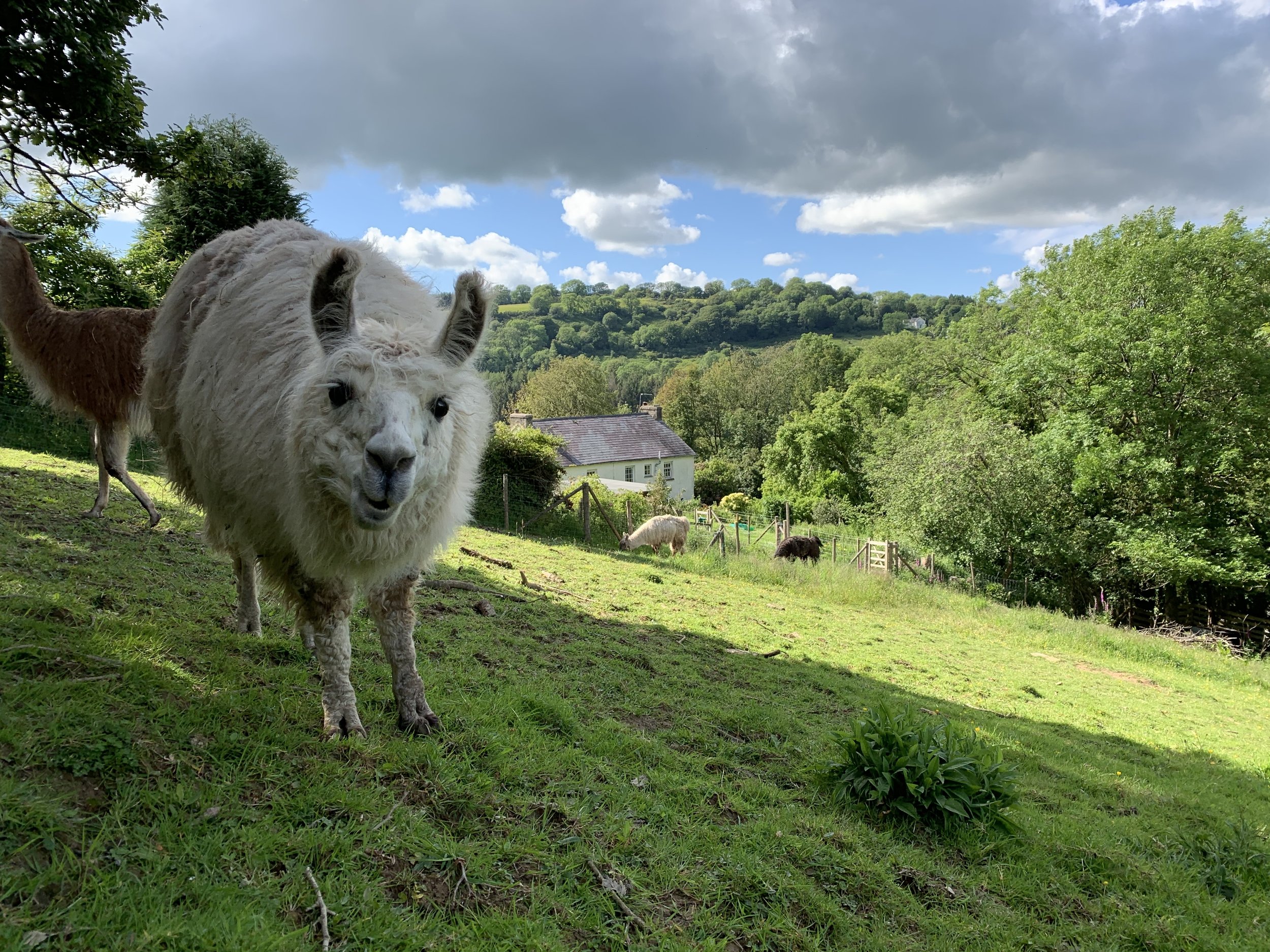
Llamas are the largest of the South American camelid family, weighing up to 180kg and standing approximately 1.25m at the shoulder. They were domesticated from their wild cousin, the guanaco some 5000 years ago. Their ancestors inhabited the plains of North America and migrated south to the Andes about three million years ago.
Elegant and exotic, llamas are strong, intelligent and hardy – and they had to be. When the Spanish invaded South America in the sixteenth century they cleared the land and culled indigenous species such as the llama to make way for their grazing cows. The llamas therefore were limited to only the most extreme areas of the continent where the Spanish cows could not exist – high up in the Andes where the grazing was poor, the weather extreme and the air thin. Had it not been for the robustness and adaptability of this most noble of animals, they may have become extinct at the hands of man.
Llamas have a gentle temperament, inquisitive nature, and expressive eyes that can seemingly bore deep into your soul. With their distinctive ‘banana’ shaped ears, they are found in a variety of colours from solid white to black and with varying shades and mixes of brown and grey.
Llamas normally live anywhere between 12 to 18 years, although some may live to be over 20.
Singing llamas

One of our favourite characteristics of llamas is their ability to ‘hum’. Llamas are generally quiet animals, but in some scenarios – particularly when they are curious or meet new people – they quite often break out into a spot of humming (and we usually notice that people will eventually hum back to them!). All of our llamas have different hums – Ieuan and Zazu have quite deep hums, whilst Teilo and Albie are higher pitched and more nasal. Teilo in particular is a humming master and will happily provide a willing audience with lengthly humming renditions for minutes at a time.
Llamas are becoming increasingly popular in Britain as they are gentle, quiet, hardy and undemanding. They will live in harmony with other animals and many will protect smaller prey species such as chickens from predators. Llamas quickly learn to wear a halter and to be led. They can also be taught to pull a cart.
Llamas are excellent trekkers – this being one of their traditional uses in South America. They will happily carry a pack and are capable of travelling vast distances, offering the long distance walker or the picnicking family both a fun companion and a willing helper!
What’s the differen between a llama and an alpaca?

Llamas are larger than alpacas and have longer ears, faces and noses, whereas alpacas are more ‘pug-like’. Experienced camelid handlers who are used to both animals frequently describe alpacas as being more skittish than llamas. Alpacas have generally been bred to look nice in a field and get sheared once a year for their fibre. Llamas on the other hand have been bred to carry loads next to a human, and therefore are genetically much more predisposed to tolerate humans and dare we say even enjoying the company of humans.
It is often also noted that since llamas are larger than alpacas (and more capable of defending themselves as a result), they are calmer, as they do not see every moving thing as a potential predator. A dog can run up to an alpaca and it will flee in terror. A dog can run up to a llama, and then swiftly run away again once it realised how big it is (or potentially get booted in the face if it hangs around!)
Llamas are much more independently minded and are more likely to wander up to something new out of curiosity than to flee in terror. The fleece (fibre) can be sheered and spun / woven from both animals. Once you are familiar with the two species, the differences are obvious. For many though (particularly on the internet!) – it can be quite confusing to distinguish between the two.
Alpaca vs llama
In this image, the alpaca is on the left, and the llama on the right. In Britain, it can be quite common to see alpacas grazing away in a field. Llamas on the other hand, are much rarer.
Do llamas spit?

Not at people!
Just as dogs can bite and cats can scratch and horses can kick, so llamas can spit – but this is predominantly amongst themselves to maintain a pecking order and to maintain their own space.
The vast majority will only do so at humans in very rare and very particular circumstances – such as if they have been incorrectly reared (i.e. hand reared instead of left with their mother – in these scenarios the young llama grows up thinking that all humans are llamas, and therefore thinks it is okay to use normal llama specific behaviour such as spitting). Llamas can also spit if they are badly treated, or are put through situations that they find excessively stressful. Spitting is traditionally associated with ‘zoo llamas’. If we were confined to a zoo then we would probably start spitting too!
In summary it is really a much over-hyped characteristic, mostly found in some zoo or farm park situations where they are all too commonly hand-reared or over-handled as youngsters. It is usually irrelevant to owners’ and trekkers’ day-to-day experience of their llamas.

